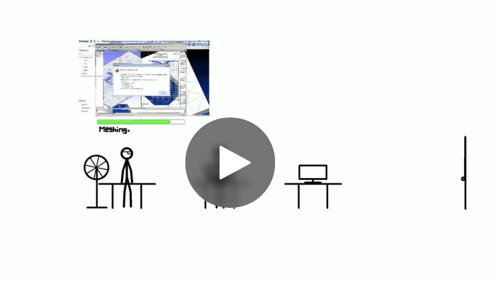Midas NFX: Comparison of Analysis Process [Infograph]

Author: Gabriel Roade
Publish Date: 27 Dec, 2021

Conduct your analysis for FREE!
Find out more about the revolution MeshFree brings to the future of FEA.
TRANSCRIPT
The Analysis Process
TRADITIONAL FEM
1. Problem Definition
Asses the dimensions of the object studied, along with its materials.
Determine the boundary and load conditions, and the objective of the study.
2. Model Idealization
Simplify the object of study.
Use symmetry and analysis segmentation to narrow down the variables.
Mathematically conceptualize the model as much as possible to reduce calculation time.
3. Definition of Material and Elements
Determine the type of elements studied and their mathematical properties.
Assign the selected materials to their corresponding elements.
4. Mesh Generation
Define the mesh element dimension (1D, 2D, 3D) and their shape (linear, triangular, quadrilateral, etc.).
Define the element size and generate a mesh.
Localize areas of interest and reassess element density and geometry-specific sizing.
Improve overall quality of the mesh by properly adapting it to the geometry and the problem conditions.
5. Load Input
Determine the magnitude and location of the loads acting on the object.
Loads can be different types depending on the problem studied: forces, pressure, temperature, etc.
6. Input of Boundary Conditions
Input the boundary conditions fixing the model at their corresponding location.
Select the proper conditions having in mind symmetry and real world constraints.
7. Element Stiffness Matrix Formation
The governing equation for each one of the mesh elements is defined by the program.
{f} = [k]{δ}
8. System Stiffness Matrix Formation
The system stiffness matrix governing the entire model is formed by combining the element stiffness matrices.
Displacement, strain and stress are calculated from such matrix.
{F} = [K]{Δ}
9. Deformation Shape Examination
Study the analysis results for deformation to assess if the analysis is reliable.
Judge the usability of the model based on maximum displacement and displacement allowance.
10. Stress Distribution Examination
In order to ensure safety, examine the stress distribution and maximum stress to confirm stress allowance is not exceeded.
Compare results against experimental or analytical solutions to test the accuracy of analysis.
MIDAS MESHFREE
1. Import CAD Model
Import the 3D model directly into a CAD interface. MeshFree is compatible with all commercial CAD files.
The program defines material data automatically from the CAD file. Material properties can also be modified on MeshFree.
The program automatically determines the type of contact between parts of assembly models. Contact conditions can also be modified.
2. Apply Load and Boundary Conditions
Designate the constraints in the parts of the model that must be fixed.
Enter load condition in the area where the load should be applied. A variety of options are available for static, dynamic and thermal loads.
MeshFree provides boundary and load conditions guidance depending on the type of analysis.
No need for meshing!
3. Analysis
Execute the calculation and the orthogonal grid will be automatically applied to each part to perform the analysis.
State-of-the-art direct analysis allows the program to define the boundaries of the model within the grid without the need of a shape-dependent mesh.
Shorter overall analysis time and high analysis success rate.
Analysis can be performed immediately when the model is modified.
MeshFree offers a variety of analysis features, concentrating on those which are most needed in the design stages.
MESHFREE
Analysis directly from 3D CAD Model
Simple 3-step Analysis Process
Powerful Design Modification
NAFEMS Theoretical Value and Verification
Scordellis-Lo Barrel Vault: 0.04% difference
Elliptic Membrane Under Uniform Outward Pressure: 0.11% difference
Two-Dimensional Heat Transfer With Convection: 1.10% difference
Comparison with FEM Results: 0.98% difference
Comparison with Practical Model: 1.78% difference




Add a Comment